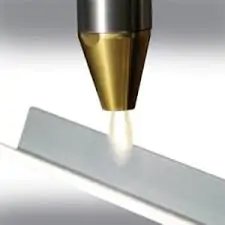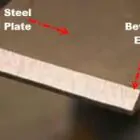It is a bright flame that can look like a welding arc. But it has nothing to do with the actual joining. It is there in preparation. The arc moves over metal and plastic surfaces with the highest level of accuracy. A robot controls it, to the millimetre. After that, the pieces look the same as they did before. But if you look closely, you can see that there are big differences. Atmospheric pressure plasma technology is a special case of plasma technology. But what does it mean to clean with plasma? What are the pros and cons of cleaning with plasma? How is cleaning with plasma different from other ways of cleaning?
Plasma cleaning is for activation and cleaning.
Atmospheric pressure plasma is to get rid of organic residues on surfaces, whether it is of metal or not. You can do it without using liquid chemicals. Surface activation is another area where this process is present. The focus here is on getting the surface of a wide range of different materials ready for bonding or welding in the best way possible.
Also, this is a fairly new technology that is good for the environment and not too expensive. Demand for these kinds of processes keeps going up. Plasma cleaning is also easy to add to production, and you can use it to clean a wide range of materials. This means that the process is present in many different industries, including the automotive, commercial transportation, general industry, and many more.
Modern production and lightweight construction technologies depend on the cleanliness of past surfaces.
What happens with hot, active plasma.
The exact way this process works comes from arc welding technology: the untransferred arc is lit in the welding torch between the electrode and plasma nozzle. This means that there is no need to connect the part to the ground earth. Then, process gas is used to push the arc out of the nozzle. Lastly, the plasma flame that is made cleans or activates the surface of the part with pin-point accuracy. This is done by mechanical, thermal, and chemical processes.
Using different process settings, the plasma flame can also be fine-tuned to the surface of the material. For surfaces made of plastic, for example, the heat must be turned down a lot. Most of the time, process parameters like treatment speed, distance to the surface, amperage, and gas regulation are used to do this.
You can clean different combinations of materials with plasma in a very precise way.
Plasma technology is perfect for pre-treatment in joining processes, whether you do it by hand or with a fully automated system. Using very precise output control, you can also treat a wide range of different combinations of materials, like a mix of plastic and metal parts. The user can quickly, easily, and accurately set the process parameters for each cleaning area. The surface of the part is intact.
With atmospheric pressure, you can clean parts as well. Since it is possible to programme hot active plasma cleaning processes with pinpoint accuracy, it is not necessary to clean the whole part before moving on to the next step in the production process. Only the places that need to be clean are the places you need to treat.





